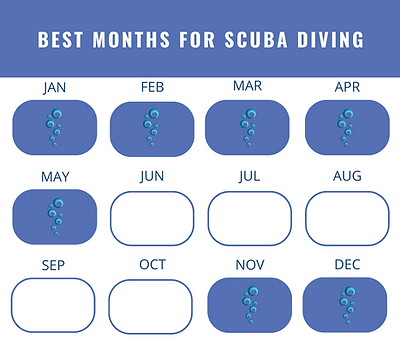


Costa Rica
Diving in Costa Rica
Here are my top 5 locations for scuba diving in Costa Rica and why:
Catalina Islands: Located off the Pacific coast of Costa Rica, the Catalina Islands are a popular diving destination known for their clear waters and diverse marine life. Here you can find schools of tropical fish, dolphins, sea turtles, and even bull sharks.
Bat Islands: Situated off the northwest coast of Costa Rica, the Bat Islands are known for their strong currents and large pelagic fish, such as sharks, rays, and schools of tuna. These islands are considered as one of the best spots to see bull sharks, hammerheads and mantas.
Marino Ballena National Park: This national park is located on the southern Pacific coast of Costa Rica and is known for its colorful coral reefs and marine life, including dolphins, sea turtles, and various species of tropical fish.
Cocos Island: This uninhabited island is located about 350 miles off the Pacific coast of Costa Rica and is a UNESCO World Heritage Site. It's known as one of the best diving spots in the world to see hammerhead sharks, as well as a variety of other marine life such as manta rays, dolphins, and sea turtles.
Cano Island: located on the southern Pacific coast of Costa Rica, Cano Island is known for its clear waters and diverse marine life, including schools of tropical fish, sea turtles, and dolphins. The island also has several shipwrecks to explore.
It's worth mentioning that Costa Rica offers many more diving locations, these are just a few of the most popular and known spots. The best option is to check with local dive operators for the best diving sites according to your level and preferences.
Costa Rica
Costa Rica is a popular destination for scuba diving due to its diverse marine life and clear waters. The Pacific coast of Costa Rica is known for its strong currents and large pelagic fish, such as sharks, rays, and schools of tuna, while the Caribbean coast is known for its calm waters and colorful coral reefs.
Some popular dive sites in Costa Rica include the Catalina Islands, Bat Islands, and the Marino Ballena National Park.
In addition to recreational diving, Costa Rica also offers opportunities for technical diving, such as deep diving and cave diving.
Dive operators in Costa Rica are required to be certified and follow strict safety guidelines, ensuring a safe and enjoyable diving experience.
Overall Costa Rica offers a variety of diving options, from beginner to advanced, and is a great place to explore the underwater world.
"Most famous for the sheer amount of animals you can find on land, but don't forget the creatures you'll find in the ocean!"
Additional Information
The best season for scuba diving in Costa Rica depends on the type of diving you are looking to do and the specific location. In general, Costa Rica has two distinct seasons: the dry season and the rainy season.
The dry season, which runs from December to April, is considered the best time to visit Costa Rica for scuba diving. During this time, the weather is generally sunny and dry, and visibility in the water is at its best. The water is also warmer during this time, making it more comfortable for diving.
The rainy season, which runs from May to November, is not considered the best time for diving, as the weather can be unpredictable and visibility in the water can be reduced. However, it is still possible to dive during this time, and some diving operators offer special deals and discounts.
On the Pacific Coast, the best time for diving is during the dry season, especially from December to April, when the water is warmer and visibility is at its best. On the Caribbean side, diving is good all year round, but the visibility is better during the dry season.
Overall, the best season for diving in Costa Rica is the dry season, but you can also find good diving opportunities during the rainy season as well. It's always recommended to check with local dive operators for the best and accurate information on diving conditions.
How to get there?
There are several ways to get to Costa Rica for scuba diving. The most common way is to fly into the Juan Santamaria International Airport (SJO) in San Jose, which is the main international airport in Costa Rica. There are several major airlines that offer flights to Costa Rica from cities throughout North America and Europe. Once you arrive in San Jose, you can take a shuttle, bus, or rental car to your final destination.
Another option is to fly into Liberia International Airport (LIR) in Liberia, which is located on the northwest coast of Costa Rica. This airport is particularly convenient for those looking to dive on the Pacific coast of Costa Rica.
You can also fly into other regional airports such as Daniel Oduber Quirós International Airport (LIR) in Liberia, or Tobías Bolaños International Airport (SYQ) in San Jose, which are located near the main diving spots.
Once you reach the destination, it is common to arrange transportation with the diving operators, or if you have a rental car, you can drive to the diving sites by yourself.
Cocos Island
Cocos Island is quite a trip to get to, however, trust me when I say it's worth it! The beaches are gorgeous, and the dive sites are versatile. You can find many smaller creatures and also see big pelagics.


"Catalina Islands"
The Catalina Islands are uninhabited and offers some of the best diving in Costa Rica. The area is also well known for finding schools of devil rays, spotted eagle rays, bullseye rays, bat rays, and various other forms of stingrays. There are also huge schools of tropical fish ranging in the size from micro to massive. There are quite often sharks sighted, most likely white-tip sharks.







%20edit_JPG.jpg)
%20edit_JPG.jpg)